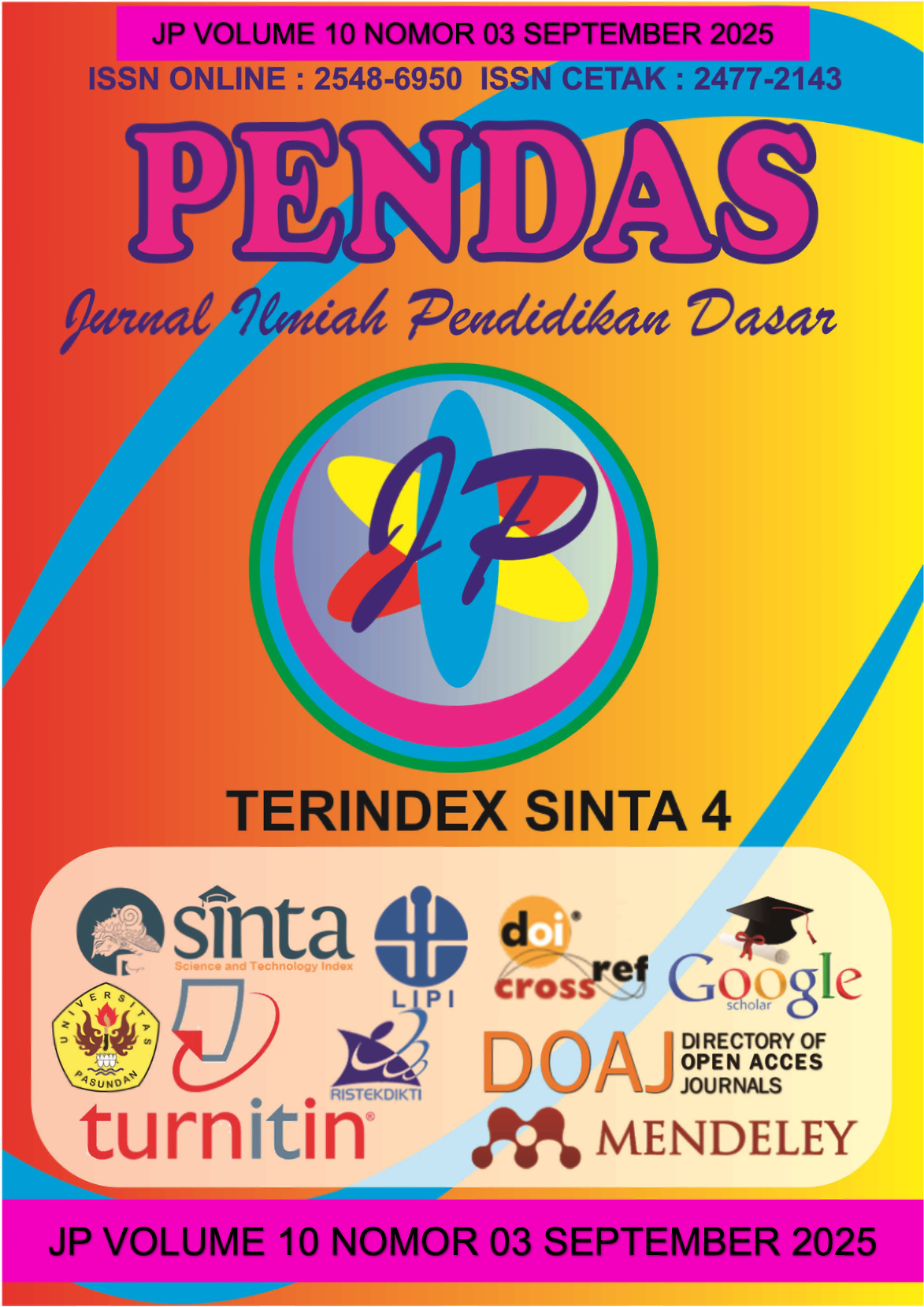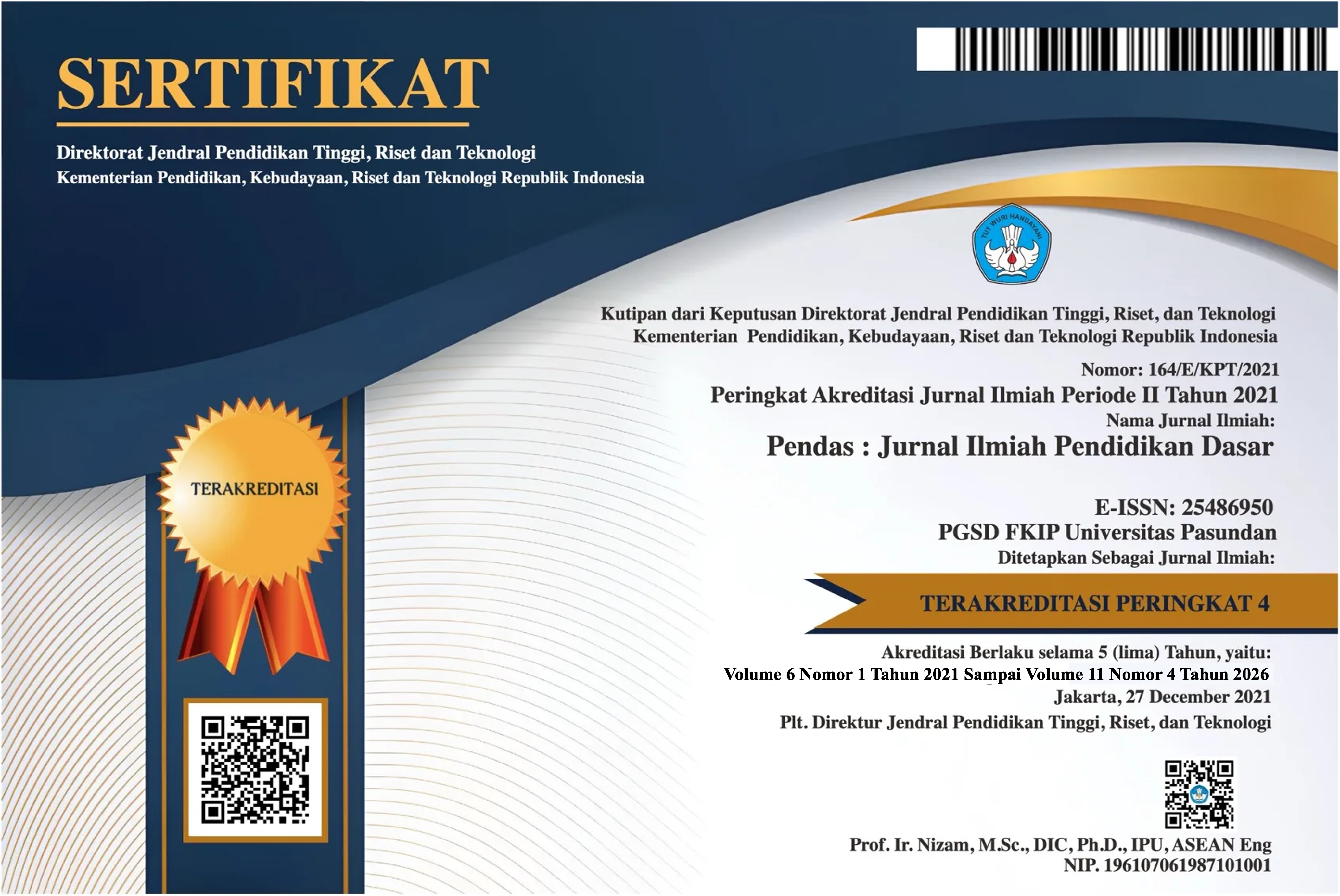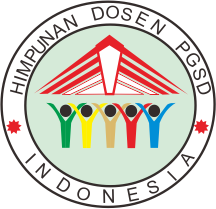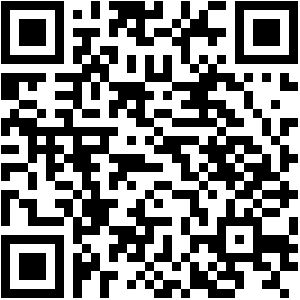PENGEMBANGAN INSTRUMEN TES NUMERASI BERBASIS TIMSS BAGI SISWA KELAS IV SEKOLAH DASAR
DOI:
https://doi.org/10.23969/jp.v10i03.29222Keywords:
Test Instrument Development, Numeracy, TIMSS, Elementary SchoolAbstract
This study aims to develop a TIMSS-based numeracy test instrument for fourth grade elementary school students through the stages of development research. This study also aims to prove the validity and test the reliability of the instrument, analyze the characteristics of the test instrument based on item responses, analyze the practicality and determine the numeracy profile of test takers. This research is a type of Research and Development (R&D with reference to the Four-D (4D) model, which consists of four stages. In the process of developing test instruments, student involvement was carried out in stages, namely, 19 students in the small-scale test trial and 90 students in the large-scale test trial stage. Data collection was carried out through several methods, such as interviews, distributing questionnaires, and giving tests. Data analysis was carried out using qualitative and quantitative approaches, where qualitative data was obtained from the results of the needs analysis, while quantitative data was obtained through expert assessments, the results of small-scale trials, and large-scale trials. The results showed that the TIMSS-based numeracy test instrument had content validity >0.80 on each item and instrument reliability level of 0.72. The value of agreement between experts based on the Intraclass Correlation Coefficient (ICC) test also showed a figure of 0.72. Based on item analysis using the Rasch model, test items are distributed in four levels of difficulty, namely very difficult questions of 13.3%, difficult 40%, easy 30% and very easy 16.7%. Overall, this instrument meets the item eligibility criteria and is considered suitable for use in measuring the numeracy skills of fourth grade elementary school students.
Downloads
References
Adinda, D. W., Nurhasanah, & Oktaviyanti,
I. (2022). Profil Kemampuan Numerasi
Dasar Siswa Sekolah Dasar Di SDN
Mentokan. Jurnal Ilmiah Profesi
Pendidikan, 7(3), 1066–1070.
https://doi.org/10.29303/jipp.v7i3.700
Arikunto. (2008). Dasar-dasar Evaluasi
Pendidikan. Bumi Aksara.
Arikunto, S. (2013). Dasar-dasar Evaluasi
Pendidikan (Jakarta). Bumi Aksara.
Curtis, D. D. (2004). Person Misfit in Attitude
Surveys: Influences, Impacts and
Implications. International Education
Journal, 5(2), 125–143.Dougherty, C. (2003). Numeracy, literacy
and earnings: evidence from the
National Longitudinal Survey of Youth.
Economics of Education Review, 22(5),
511–521.
https://doi.org/https://doi.org/10.1016/S
0272-7757(03)00040-2
Foley, A. E., Herts, J. B., Borgonovi, F.,
Guerriero, S., Levine, S. C., & Beilock,
S. L. (2017). The Math Anxiety-
Performance Link: A Global
Phenomenon. Current Directions in
Psychological Science, 26(1), 52–58.
https://doi.org/10.1177/0963721416672
463
Gerardi, K., Goette, L., & Meier, S. (2013).
Numerical ability predicts mortgage
default. Proceedings of the National
Academy of Sciences of the United
States of America, 110(28),
11267–11271.
https://doi.org/10.1073/pnas.122056811
Gross, J., Çekiç, O., Hossler, D., & Hillman,
N. (2009). What Matters in Student
Loan Default: A Review of the
Research Literature. Journal of Student
Financial Aid, 39, 19–29.
https://doi.org/10.55504/0884-
9153.1032
Kemendikbud. (2023). Rapor Pendidikan
Indonesia 2023.
Linacre, J. M. (2010). Predicting responses
from rasch measures. Journal of
Applied Measurement. Journal of
Applied Measurement, 11(1), 1–10.
Maulidina, A. P. (2019). Profil Kemampuan
Numerasi Siswa Sekolah Dasar
Berkemampuan Tinggi Dalam
Memecahkan Masalah Matematika.
Jurnal Bidang Pendidikan Dasar, 3(2),
61–66.
https://doi.org/10.21067/jbpd.v3i2.3408
Misbach, I. H., & Sumintono, B. (2014, May
24). “Pengembangan dan Validasi
Instrumen Persepsi Siswa Tehadap
Karakter Moral Guru di Indonesia
dengan Model Rasch.” Seminar
Nasional Psikometri: "Pengembangan
Instrumen Penilaian Karakter Yang
Valid. Di Hotel Lorin Solo.
Mullis, I. V. S., Davier, M. V., & Martin, M.
O. (2023). TIMSS 2023 Assessment
Frameworks. IEA TIMSS & PIRLS
International Study Center.
Mullis, I. V. S., Martin, M. O., Foy, P., &
Hooper, M. (2015). TIMSS 2015
International Results in Mathematics.
Palimbong, J., Mujasam, M., & Allo, A. Y. T.
(2018). Item Analysis Using Rasch
Model in Semester Final Exam
Evaluation Study Subject in Physics
Class X TKJ SMK Negeri 2 Manokwari.
Kasuari: Physics Education Journal
(KPEJ), 1(1), 43–51.
Prastyo, H. (2020). Kemampuan
Matematika Siswa Indonesia
Berdasarkan TIMSS. Jurnal Padegogik,
3(2), 111–117.
https://doi.org/10.35974/jpd.v3i2.2367
Slamet, F. A. (2022). Model Penelitian
Pengembangan (R n D). Institut Agama
Islam Sunan Kalijogo Malang.
Sugiyono. (2020). Metodologi Penelitian
Kuantitatif, Kualitatif dan R & D.
Alfabeta.Sumintono, B., & Widhiarso, W. (2015).
Aplikasi Pemodelan Rasch Pada
Assesment Pendidikan. Trim
Komunikata Publishing House.
Tenny, Nisa, A. K., & Murtaplah. (2021a).
Pengembangan Literasi dan Numerasi
dalam Proses Belajar dan Mengajar.
Tenny, Nisa, A. K., & Murtaplah. (2021b).
Pengembangan Literasi dan Numerasi
dalam Proses Belajar dan Mengajar.
Direktorat Sekolah Menengah Atas.
http://repositori.kemdikbud.go.id/id/epri
nt/29935
Thiagarajan, S., Semmel, D. S., & Semmel,
M. I. (1974). Instructional development
for Training Teachers of Exceptional
Children: A Sourcebook.
Downloads
Published
Issue
Section
License
Copyright (c) 2025 Pendas : Jurnal Ilmiah Pendidikan Dasar

This work is licensed under a Creative Commons Attribution 4.0 International License.



















